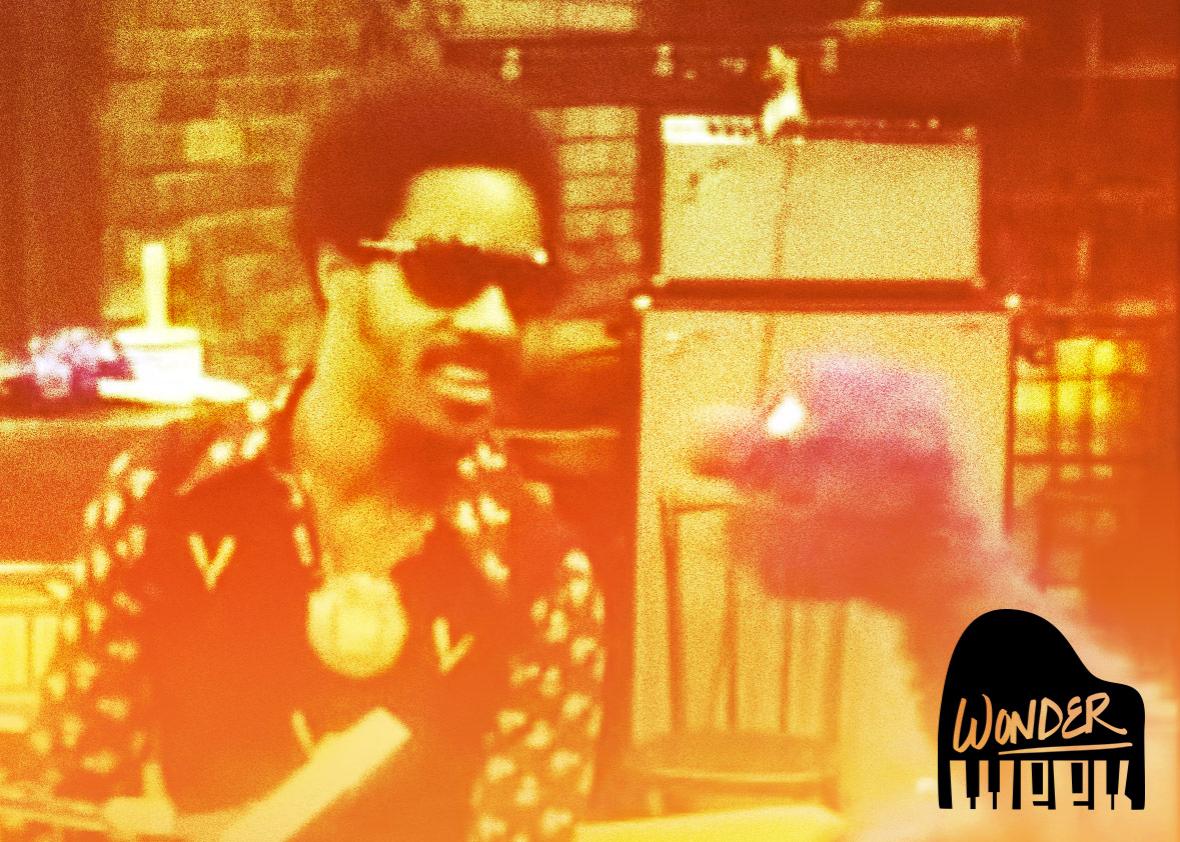I was 6 in 1973 and had spent most of my conscious life on or near Air Force bases in Colorado and Texas—in those Cold War times, surely among the world’s most funk-deprived cultural landscapes. So I have an intense sense memory of sitting on the living room rug with my older brother and watching Stevie Wonder’s live performance of “Superstition” on an April 1973 episode of Sesame Street. Rewatching it now—as I have countless times since the internet came along to make our childhoods searchable—has an uncanny way of bringing back that moment. It must, I now realize, have been one of my first conscious experiences of seeing a great artist at work.
Whether or not it evokes a Proustian thrill of remembrance, there are many reasons to revisit this Sesame Street performance, the first being that it’s 6½ flawless minutes of concentrated happiness. Stevie’s band—an absurdly tight and surprisingly extensive ensemble that barely fits onto the snug PBS soundstage—brings it with a vengeance. Far from condescending to their 4-foot-5-and-under audience—who are arrayed behind and above the band on a not particularly safe-looking faux fire escape—Stevie & Co. ascend to the heights of what live musical performance can do. They communicate with the audience and with one another, building the song in a climactic spiral. They improvise and deconstruct, even tacking on a sped-up reprise of the song’s irresistible hook as Stevie weaves in a few falsetto lines from the Sesame Street theme. His evident delight in performing to an enthusiastic juvenile audience isn’t surprising when you consider that Wonder, 22 at the time, had begun his own career as a child prodigy, attracting the attention of Motown by age 11.
The mood of shared joy that’s created in this packed performance space is so infectious that it took me several reviewings even to notice that the lyrics of “Superstition”—which hint at an obscurely demonic worldview, a paranoid alternate reality in which “the writing’s on the wall” and bad fortune lurks in every sign—are far from child-friendly. But I’ll bet that for many children like me and my older brother—and by all appearances, for that one kid with the red sweater and the shaggy mane who can’t stop headbanging on the fire-escape landing—this primal encounter with the power of Stevie Wonder was in some way transformative.
It was a glimpse into the utopic possibility of a place, neither child- nor adult-oriented but simply human, where great musicians could play their hearts out in the public square and everyone in earshot would be free to grab a maraca, climb a fire escape, and dance like a maniac. Half a lifetime later I’ve still glimpsed that utopia only a handful of times, usually for the length of a song. But I have Stevie Wonder and Sesame Street to thank for giving my brother and me an early lesson in the limitless possibilities of human creativity, not to mention the pure liberating power of getting down.
